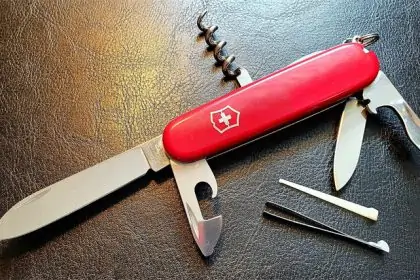Online shopping is trend – and not just since the Corona epidemic. But beware: more than 50 % of the goods seized at EU borders are counterfeit products from online shopping, according to a study by EUIPO and OECD.
Counterfeit products in online shopping

The European Trademark Office (EUIPO) and the Organisation for Economic Co-operation and Development (OECD) are collaborating to produce studies on global trade in counterfeit and pirated goods. The most recent study in this series summarises the results with regard to online trade.
The study, entitled “Misuse e-commerce trade in counterfeits”, published in October 2021, shows depressing figures on counterfeit goods in online trade: more than 50% of goods seized at EU borders are counterfeit goods from online trade and online shopping. The sad record among seized counterfeit products is held by China as the country of origin: more than 75% of seized goods from online trade originate from China.
Counterfeit products sent in small postal packages
The likelihood of counterfeits in online shopping is highest for perfumes and cosmetics, optical products (glasses) and – of particular concern – also for pharmaceutical products. In actual proportion, footwear (33.7% of all seizures), clothing (17.3%), perfume and cosmetics (9.6%) and leather products (8.7%) are among the counterfeit products. A relatively conspicuous number of toys are also counterfeit goods: Toys (5.5%) account for a similar share among seized counterfeit products as electrical machinery and appliances (6.5%).
Many of these goods are traded at rather low price levels. This is because in nominal terms, seizures related to online trade only account for 14 % of the value of all seized goods. In most cases, the counterfeits are sent in small packages, especially via postal services; this applies to 91 % of the seizures.
Most Consumers are online-shopping
This now affects almost all consumers in the EU, as online shopping and retailing is a clear trend. While only 38% of consumers in OECD countries bought products online in 2010, this was the case for almost 60% of consumers in 2018. The Corona epidemic has reinforced this again, with online sales increasing by more than 20% in almost all countries compared to 2019.
For the study, seizures of counterfeit goods by customs authorities were investigated in the period 2017-2019; it can be assumed that counterfeiting in online retail has even increased, after all, this offers counterfeiters an attractive market environment. Websites are also frequently set up to sell the counterfeit goods. In addition, trustworthy online trading platforms are often infiltrated with counterfeit products.
Stop counterfeiters
For consumers, this means: above all, be attenive, always pay attention to the senders of supposedly good offers and also do not assume every website as being reputable. Incidentally, social media platforms are also often used as drivers for counterfeit products. Platform providers have also developed concepts for combating the sale of counterfeit goods on their platforms, but product counterfeiters adapt to them quasi dynamically.
In principle, border seizure is also an effective means of preventing the import of trademark, patent or design-infringing products into the EU or Germany. In the same way, border seizure can also be applied to products intended for export or re-import into the EU or Germany.
Equally important is a cleverly designed and effective monitoring of your protection rights as preventive work.
Please contact us if you have any questions.
Sources:
EUIPO/OECD ‘Missbrauch durch Produktfälschungen im Online-Handel’
Image:
Preis_King | pixabay | CCO License








Leave a Reply